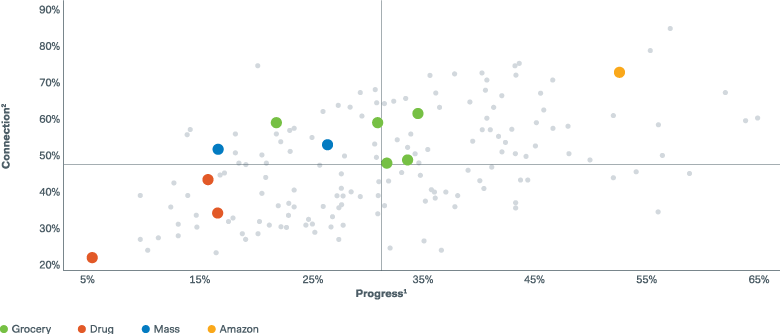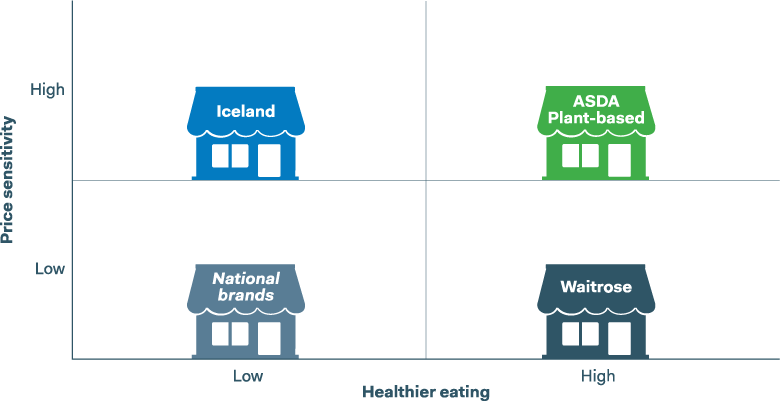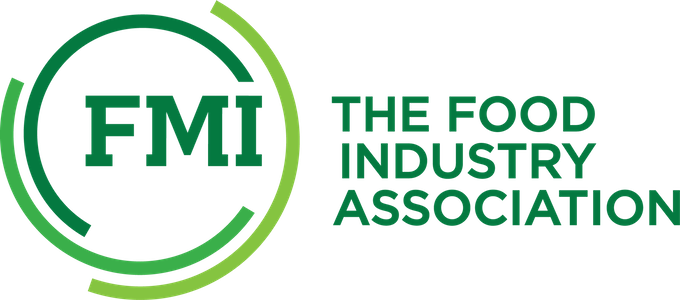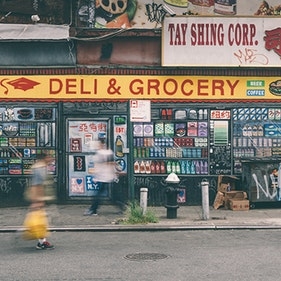Real estate expertise was the driver of growth, coupling convenient location with scale to provide a lower price. In this legacy version of food retail, consumers would be hard-pressed to tell one offering from another but for the brand name on the door.
Since 2010, however, more than 12,000 physical food retail stores have closed their doors. We know the cause: E-commerce is redefining convenience, efficient pricing, and category blurring. In a rapidly changing world, the operator mindset that enabled retailers to be successful in the past needs a new playbook to succeed in the years to come. While functional performance and digital prowess will be critical to future success for food retailers, the brands that create meaning in their customers’ lives will thrive and endure.
Being Meaningful
To generate meaning requires delivering connection and progress to the customer. Brands that excel at connection are those that are true to the individual’s functional and emotional needs. Rather than projecting a corporate one-size-fits all, they create a sense of belonging or immerse customers in a personalized experience. Chick-fil-A exemplifies strong connection through a focused brand proposition. Those with connection also demonstrate that they have the customers’ best interests at heart. How many brands offer their best deals to existing customers on an ongoing basis, versus only to acquire new ones?
Progress involves helping customers do things they couldn’t do before. It’s produced through functional innovation: better performance, easier to use, and setting the standard. Technology brands such as Uber and Airbnb are good examples of companies that have created entirely new markets through functional innovation. Another form of progress is how brands help people build stronger relationships with those around them, whether it be close family ties like Disney, shared passions like Pinterest, or doing right by society like Patagonia.
These two aspects of meaning are grounded in our biochemistry: We intrinsically seek connection and progress. Oxytocin is our bonding hormone, dopamine our drive to always find the next new. Brands that evoke these hormones in an experience and in our memory of that experience are those we find most meaningful.
To remain meaningful for any sustained period requires building both connection and progress. Without connection, brands lack loyalty. Without progress, there is a risk of disruption. We may love Netflix, but with many alternatives, some of which are free, Netflix has lost subscribers in the US this year. For some, love just isn’t enough.
Why Meaning Matters
To substantiate this thinking, Lippincott, Oliver Wyman’s creative consulting arm, gained feedback from 30,000 consumers spanning 400 brands across the US, UK, France, China, and Australia. We used this data to build a statistically robust model of brand performance. Highlights from our findings include:
- Brands that score high on connection and progress had five times the annual revenue growth of those scoring low on both dimensions: 11 percent annual revenue growth versus 2 percent
- Progress drives double the immediate revenue growth in comparison with connection
- Connection, however, is more enduring than progress, meaning that benefits accrue for longer and are easier to build and sustain
- Connection also has a stronger influence when considering new products and services, meaning that if customers love a brand, they’re more willing to purchase other services
In our US research, we gained insight on a mix of food, drug, and mass brands. In Exhibit 1 we see a clear distribution in performance across companies and also the outperformance that Amazon brings. While many brands deliver connection, very few deliver progress.
Meaning also needs to be considered within the context of price paid. The average value ratio across the US market is 3.3. Amazon has a value ratio over 12, with just a single food retailer close behind at 11. The remaining brands span from 1 to 8. This gap is dramatic and reinforces the threat coming from outside the traditional category.
These findings reinforce the point that a convenient location no longer provides a competitive advantage. Instead, companies need to become more meaningful and do so at a cost that delivers a more competitive value ratio to customers.
Exhibit 1: Brand classification (users)

1. Progress represents T2B% for users on “This brand helps me do things I could never do before”
2. Connection represents T2B% for users on “I love this brand”; Brands in industry but not labeled include: Transactional: Lenovo
Source: Lippincott Brand Aperture®, June 2019, U.S. consumers
What's Meaningful To Shoppers
A foundational requirement is to know the audiences with which you want to be most meaningful. While this might sound obvious, many retailers typically segment customers by behavior, instead of attitude, and then seek to gain share with those delivering the greatest basket value. A challenge with this approach is that while the “what” is economically attractive, it doesn’t provide insight into the “why” they shop, which varies dramatically across shoppers. Historically, segmentations grounded in attitudes have been challenging to activate due to the difficulty in targeting, but new marketing technologies make it possible to pinpoint attitudes.
Two dimensions that we’ve found to be particularly discriminating in food retail are price sensitivity and the desire to eat healthier. In simplistic terms, this covers four distinct audience archetypes that will seek out different solutions where those are available as shown by Exhibit 2. The introduction of Plant-based by ASDA, a vegan line, is an excellent example of addressing an underserved that can’t afford premium brands but is looking for better quality in what they eat. (See Sidebox: “How Private Label Can Add Meaning to Your Brand.”) With clarity on the functional, emotional, and social needs of the target audience, it becomes more straightforward to see how they can be served in a meaningful way.
Building Meaning Through The Experience
The most urgent need for most retailers is to ensure that they are the preferred destination for shoppers, which entails offering an experience that they can’t get elsewhere. We see others evolving the role of physical retail: Best Buy is thriving in part due to the expertise and helpfulness of its employees around a complex purchase; Showfields makes discovery a magical experience; Starbucks is evolving its stores to reflect the majority of orders now being made ahead of time through its app.
In food retail, private label, the most comprehensive example of a signature experience, can define a retailer as a destination when done well. The common thread here is that each example creates a destination that provides an emotional lift for the shopper and a point of distinction for the retailer.
Exhibit 2: Price sensitivity

The Role Of Brand
For many operators, brand is just a coat of paint to be applied by the marketing team. This fundamentally misunderstands what we mean by brand and its power as a business asset. Amazon’s Jeff Bezos said it well: “Brand is what they say about you when you leave the room.” It’s the heuristic we use as shorthand for every interaction we’ve ever had with a company, whether through personal experience or word of mouth. It’s the missing multiplier for why perception of performance can be very different from objective reality.
So how can a brand be made to “work harder” in the interests of the business?
Innovation is hard, particularly when you’re faced with the challenge to “just be better” than the competition. The fact that so many physical retail stores are considered interchangeable by shoppers is a testament to the lack of innovation that has occurred over recent years.
Brand provides a rich source of ideas for how to innovate beyond functionally performing better (which can be both costly and rapidly competed away). Being known for helping customers build stronger relationships with those around them is 1.5 times more influential than functional improvement alone. An advantage of this more emotional and social contribution to progress is that ideas linked to your brand idea can’t be directly implemented by others. The wine bar at one grocer isn’t going to be replicated by its competitors; it’s just not consistent with their proposition.
A clear brand strategy also helps focus innovation for private label and what should be a major source of destination for shoppers. Were any of us aware of the sheer breadth of what cauliflower is capable of before a single retailer made this a focus of their proposition? They almost singlehandedly raised the profile of this humble vegetable in the minds of US consumers.
Brand can also help perception lead objective reality, as functional performance is challenging to directly measure in food retail. What’s the quality of your produce? Objectively, we can measure time from farm to shelf. We can also measure attributes around the care taken during that transit. However, for the shopper, none of this is visible. They will measure quality based upon shelf presentation, how employees treat the product during stocking and checkout, and then how long products remain fresh at home.
If consumers believe your brand stands for freshness and quality, their confirmation bias will reinforce evidence that supports that and mitigate examples that contradict it, literally chalking it up to “one bad apple.” It’s the brand heuristic at work.
How Private Label Can Add Meaning to Your Brand
Private label is a critical lever for determining future success. While other countries have penetration rates that approach 50 percent, the US consumer remains primarily a national brand shopper. US private label has been dominated by me-too, lower-priced facsimiles of national brands developed by under-resourced teams. This has led to inconsistent quality, poor packaging design, and shoppers purchasing out of a need to economize, rather than out of desire.
Some notable leaders that are predominantly private label have demonstrated that these products can be both better quality and lower cost. A strong private-label offer lowers the shopper’s total spend while also improving the retailer’s bottom line. It also delivers must-have SKUs that a shopper can’t get elsewhere.
It’s no surprise then that we are seeing an exciting period of private label expansion. We are seeing resistance from many firms, retail and wholesale, to adequately fund their private label teams. This will limit a much- needed source of competitive advantage. Incremental improvement won’t be sufficient.
However, no store experience will deliver without the engagement of employees, from their pride in keeping the store clean and well stocked, to how helpful and friendly they are in shopper interactions. In a high-turnover industry with relatively low hourly pay, it can be challenging to keep teams motivated.
Just as brands need to be meaningful for customers, they also benefit from being meaningful for employees. Connection is built from love for what they do and pride in what is delivered for customers. Progress comes from personal career growth and what work enables them to achieve in their life.
Exhibit 3: Brand performance by net customer rating of best days ahead1

1. Net rating of best days ahead = (% users who rate the brand as having its best days ahead of it) – (% of users who rate the brand as having its best days behind it)
Source: Lippincott Brand Aperture®, June 2019, U.S. consumers
Conclusion
Customers seek out brands that bring meaning to their lives, through both connection and progress. Physical retail has, for many, lost meaning beyond convenience at a time when the very definition of convenience has moved away from being defined by drive time. Brand provides a critical business lever to inspire retailers to regain meaningfulness to shoppers and thrive in this new competitive landscape. And while we did see a shifting picture of the industry within our data, we also found that shoppers believe that the best days lie ahead for many retailers, as indicated in Exhibit 3. To capitalize on this optimism, our belief is that while functional performance and digital prowess remain important for future success, it is crucial that brands create meaning in their customers’ lives to endure.









